Crime & Investigation
Nearly 8,000 People Missing from Delhi in Just 7 Months: Capital’s Startling Safety Crisis

7 Months, 7,880 Missing: India’s Capital Faces a Growing Human Disappearance Crisis
In what can only be described as a deeply unsettling revelation, India’s capital city Delhi has reported 7,880 missing persons between January 1 and July 23, 2025, according to data compiled by the Zonal Integrated Police Network (ZIPNET). Despite the use of advanced tracking systems and repeated awareness campaigns, authorities have not been able to trace thousands, raising pressing concerns about safety, policing gaps, and societal vulnerability.

Who’s Missing?
Of the 7,880 total missing, a significant 60% (4,753) are women, including adult females and teenage girls, while 3,133 are men. Gender-based disparity raises serious questions about women’s safety, trafficking, domestic abuse escapees, and missing youth cases often unreported due to family stigma.
District-Wise Report Card: Outer North Delhi Worst Hit
ZIPNET’s granular data reveals where Delhi’s safety net is wearing thin:
| District | Missing Persons |
|---|---|
| Outer North | 908 |
| North East | 730 |
| South West | 717 |
| South East | 689 |
| Outer | 675 |
| Dwarka | 644 |
| North West | 636 |
| East | 577 |
| Rohini | 452 |
| Central Delhi | 363 |
| North Delhi | 348 |
| South Delhi | 215 |
| Shahdara | 201 |
| New Delhi | 85 |
Outer North (including Swaroop Nagar, Samaypur Badli, Bawana) is a high-transit zone with border proximity, often linked to interstate trafficking and migrant vulnerability.

1,486 Unidentified Dead Bodies: Another Grim Statistic
Even more chilling, Delhi Police reported recovering 1,486 unidentified bodies during the same period—most of them men, with unknown identities. While some may be migrants, victims of crime, or homeless individuals, lack of identification processes remains a serious gap.
| Highest UIDs Found In | Number of Bodies |
|---|---|
| North District | 352 |
| Central | 113 |
| North West | 93 |
| South East | 83 |
| South West & NE | 73 each |
Experts believe many of these corpses could potentially overlap with the list of missing persons, but are not being matched due to limitations in database syncing, biometrics, and family reporting delays.
Why Are People Going Missing?
Key Causes Identified by Experts:
- Human trafficking (especially women and children)
- Domestic violence victims fleeing home
- Mental health crises or homelessness
- Senior citizens with memory loss
- Teenagers running away from abusive households
- Interstate migration confusion and accidents
- Inadequate public alert systems & coordination

Powerful, But Underused
ZIPNET is designed to be a powerful tool—a centralized database where states upload data on:
- Missing persons
- Unidentified bodies
- Stolen vehicles
- Kidnappings
- Lost & found children
But insiders admit the system still lacks AI matching algorithms, pan-India facial recognition, and real-time public accessibility, reducing its efficacy.
Positive Intervention: Operation Milap Shows the Way
One bright spot in this worrying trend is South West Delhi Police’s “Operation Milap”, which successfully reunited 168 missing persons with their families this year alone. Their approach included:
- Door-to-door inquiries
- Surveillance footage analysis
- Local informant networks
- Community WhatsApp groups
If replicated across districts, such proactive models could significantly reduce untraced cases.
💬 Public Voices
My 17-year-old niece vanished on her way to tuition. The police filed a report but updates stopped after 3 days,” — Pooja S., West Delhi Every week someone from the basti goes missing. No CCTV. No patrols. We’re scared to send our kids to school.” — Ramesh K., Bawana
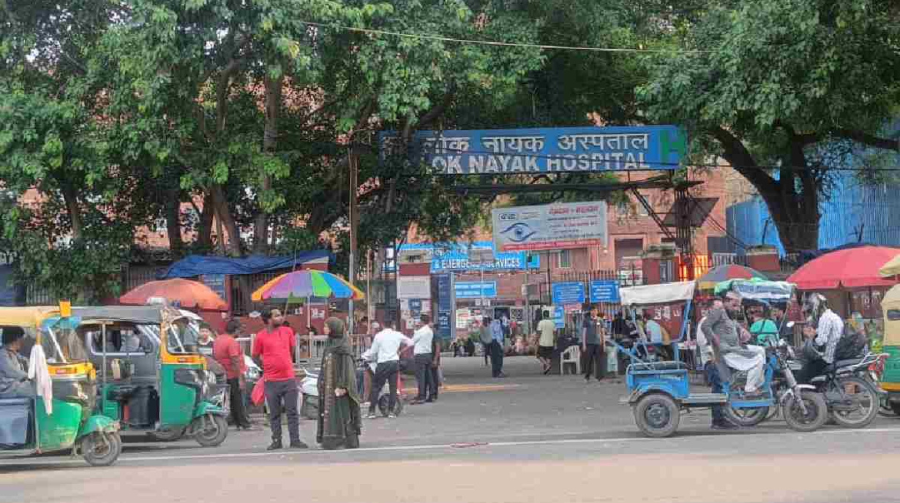
What Can Be Done?
Policy-Level Recommendations:
- AI-Powered ZIPNET upgrades to auto-match missing/found data.
- Public mobile app where citizens can search, report, and match missing profiles.
- Dedicated Missing Persons Bureau in every district.
- NGO-police collaboration for vulnerable groups (migrants, women, elderly).
- Community watch programs and reward-based tip lines.
Crime & Investigation
Pregnant Bengaluru Techie Found Hanging at Home; Family Alleges Dowry Harassment

In a shocking incident highlighting the continuing menace of dowry harassment in India, a 27-year-old woman identified as Shilpa, who was reportedly pregnant, was found hanging at her residence in Bengaluru on Wednesday.
Shilpa, who previously worked with IT major Infosys, had been married to Praveen for around two-and-a-half years. The couple has a one-and-a-half-year-old child. Police sources confirmed that her husband has been arrested for allegedly abetting suicide.
Family’s Allegations
According to the victim’s family, Shilpa had been facing continuous harassment over dowry demands from her in-laws. They alleged that the constant pressure and humiliation drove her to take the extreme step.
Family members revealed that despite her professional background and responsibilities as a young mother, Shilpa was repeatedly subjected to mental torture and financial demands. They have urged the authorities to conduct a thorough investigation and ensure strict action against all those responsible.

Police Investigation
The Bengaluru Police registered a case under relevant sections of the Dowry Prohibition Act and Indian Penal Code (IPC) Section 304B (dowry death). Officials confirmed that forensic teams were called in to examine the crime scene and further investigation is underway.
Police said that Shilpa’s husband, Praveen, has been taken into custody, and questioning of other family members is ongoing. Authorities are also collecting testimonies from neighbors and relatives to ascertain the nature of harassment she faced.
Rising Concern Over Dowry Deaths
Despite being legally banned since 1961, dowry continues to claim hundreds of lives every year across India. As per the National Crime Records Bureau (NCRB), thousands of cases of dowry deaths are reported annually, with many more going unreported due to social stigma and family pressure.
Activists have once again called for stricter enforcement of laws and greater societal awareness to curb this social evil. They stressed that even highly educated women from urban backgrounds, like Shilpa, are not spared from the menace of dowry harassment.

A Community in Shock
The tragic death has left Shilpa’s neighborhood and workplace community in deep shock. Colleagues who knew her described her as a dedicated professional and caring mother. Many took to social media to express anger over yet another case of dowry-linked abuse, demanding justice for Shilpa.
Shilpa’s one-and-a-half-year-old child is now left in the care of extended family, as authorities proceed with the investigation.

The Bigger Picture
This incident serves as a grim reminder that dowry harassment is not confined to rural India, but is equally prevalent in metropolitan cities like Bengaluru. Experts stress the need for:
- Stronger community support systems for women.
- Faster trial mechanisms in dowry-related cases.
- Counseling and helplines for women in abusive marriages.
Unless addressed collectively, such tragedies will continue to shatter families and expose deep-rooted gender inequality in Indian society.
Crime & Investigation
Who Was Manisha? Protests Erupt in Haryana After Murder of 19-Year-Old Teacher
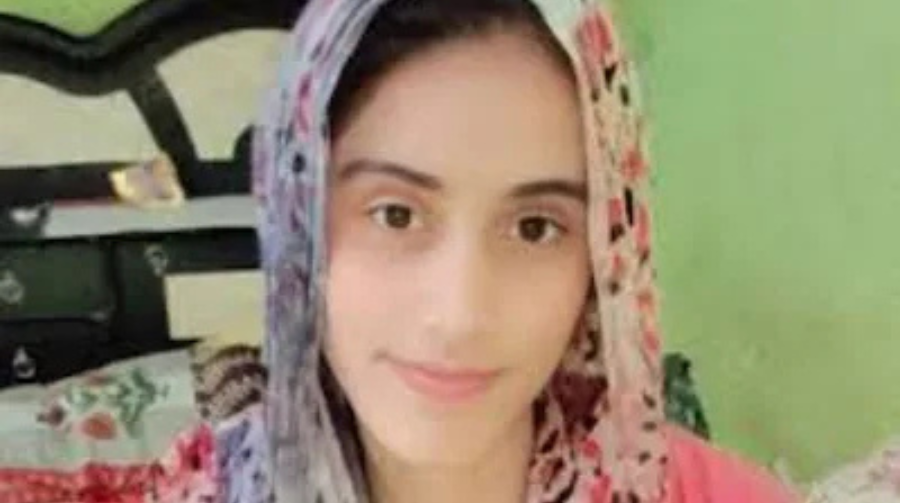
A wave of grief, anger, and political backlash has engulfed Haryana after the shocking murder of Manisha, a 19-year-old playschool teacher from Singhani village in the Bhiwani district. Her brutal killing has sparked large-scale protests, with villagers and community leaders demanding swift justice.
Manisha, who had gone missing on August 11, was found dead in a field on August 13. Her throat had been slit, leaving the community in shock and her family devastated. According to reports, she had stepped out to visit a nearby nursing college to enquire about admission. When she did not return home, her family immediately grew concerned and approached the police.

Allegations of Police Negligence
The victim’s family has alleged that the police were slow to respond and initially refused to take their complaint seriously. Instead, they reportedly suggested that Manisha may have run away and would eventually return. The family has accused the authorities of negligence in the crucial hours after her disappearance, which might have otherwise helped in saving her life.
In a strong show of defiance, the family has refused to perform her last rites until the police arrest those responsible for the heinous crime. The demand for accountability has found widespread support across the region, further fueling public outrage.

Protests and Public Anger
On Sunday, August 17, hundreds of villagers staged a protest, blocking the Delhi–Pilani road to demand immediate action. Traffic came to a standstill for hours as residents raised slogans against police inaction and demanded justice for Manisha.
Adding to the momentum, a mahapanchayat (community gathering) was held near Dhigawa Mandi, where village leaders, women’s groups, and youth representatives pledged to continue their agitation until the culprits are brought to justice. The gathering also saw demands for stronger safety measures for women, including better patrolling, stricter laws, and faster investigations in cases of gender-based violence.
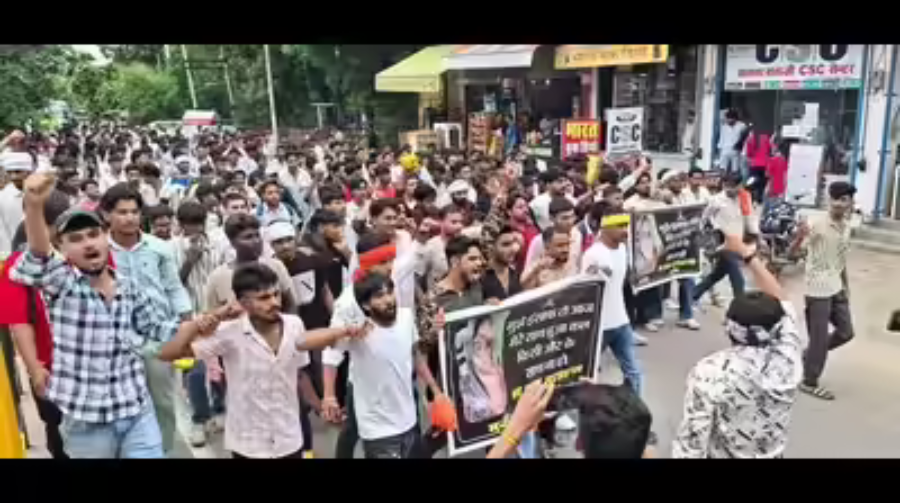
Political Reactions and Demands for Justice
The case has also drawn political attention, with opposition parties criticizing the state government over deteriorating law and order. Several leaders have visited Singhani village to express solidarity with the grieving family and to demand immediate arrests. Social media has amplified the outrage, with hashtags like #JusticeForManisha trending across platforms.
Many activists have pointed out that the case highlights the broader issue of women’s safety in rural India, where inadequate policing, delayed FIR registrations, and lack of accountability often hinder justice.
A Community in Mourning
For Singhani village, Manisha’s death is not just the loss of a young teacher with dreams of pursuing nursing — it is a collective tragedy. Friends and neighbors describe her as a hardworking, compassionate girl who wanted to improve her family’s life through education and service. Now, her dreams have been cut short in an act of unimaginable brutality.
As the investigation continues, the community stands united in grief and resistance. For them, justice for Manisha is not just about punishing her killers but also about ensuring that no other daughter of the village suffers the same fate.
Call for Stronger Laws and Accountability
Women’s rights groups and activists across Haryana and Delhi have joined the call for justice, urging the government to strengthen laws against crimes targeting women. They argue that despite repeated promises, cases like Manisha’s expose the systemic failure of law enforcement in protecting vulnerable women. Demands have also been raised for the immediate suspension of local police officials accused of mishandling the initial complaint, with activists stressing that accountability must start at the institutional level.

The Road Ahead
As protests intensify, the administration faces mounting pressure to deliver justice swiftly. Authorities have promised a fast-track investigation, but villagers remain skeptical until concrete action is taken. For many, this case has become a test of the state’s commitment to women’s safety. Whether the government can restore public faith will depend on how quickly the culprits are arrested and punished, and whether long-term reforms are implemented to prevent such tragedies in the future.
Crime & Investigation
Rajasthan: Man’s Decomposed Body Found Stuffed in Drum on Rooftop, Wife and Children Missing

A shocking murder case has emerged from Rajasthan’s Khairthal-Tijara district, where the decomposed body of a man was found stuffed inside a drum on the rooftop of his rented accommodation. The grisly discovery was made late Sunday after residents of Adarsh Colony in Kishangarhbas complained of a foul smell coming from the house.
Police identified the deceased as Hansraj alias Suraj, originally from Shahjahanpur district in Uttar Pradesh. He had been living in the area with his wife Sunita and their three children — eldest son Harshal, daughter Nandini, and youngest son Golu.
Gruesome Discovery on Rooftop
According to investigators, Hansraj had been residing in a rented rooftop room for nearly one and a half months while working at a nearby brick kiln. On Sunday, locals alerted authorities after noticing a strong stench from the rooftop.
When officers reached the spot, they discovered a large blue plastic drum, sealed and covered with a heavy stone. Upon opening it, police found Hansraj’s decomposed body inside. His throat bore a deep injury, apparently inflicted with a sharp weapon.
Adding to the horror, police noted that salt had been sprinkled over the corpse, apparently to hasten decomposition and mask the odor. DSP Rajendra Singh Nirwan confirmed this detail, stating that the circumstances strongly suggest foul play.

Family and Landlord’s Son Missing
The most disturbing twist in the case is the disappearance of Hansraj’s entire family and the landlord’s son. Since Saturday evening, Hansraj’s wife Sunita, their three children, and the landlord’s son Jitendra have all been untraceable.
DSP Nirwan revealed that Hansraj was known to be addicted to liquor and often drank with Jitendra. Police suspect that the events leading to the murder may have unfolded during one such drinking session. Both Jitendra and the family’s sudden disappearance have deepened suspicions of a larger conspiracy.
Police Investigation Underway
Upon receiving the complaint, senior police officers including DSP Rajendra Singh Nirwana, Station In-charge Jitendra Singh Shekhawat, and ASI Gyan Chand reached the location with a forensic team. The body was removed and sent for post-mortem examination at the district hospital.
Authorities have registered a case of murder and launched a search operation for the missing family members and the landlord’s son. Police teams are scanning nearby districts and inter-state routes to track down possible suspects.
The case has sent shockwaves through the locality, with residents expressing fear and disbelief at the brutal nature of the crime.

Chilling Parallels with Meerut Drum Murder Case
The incident bears eerie similarities to the infamous Meerut drum murder case from March 2025. In that case, merchant navy officer Saurabh Rajput was brutally killed by his wife and her lover. His dismembered body was concealed inside a blue plastic drum filled with wet cement. The crime came to light only after the couple’s young daughter repeatedly told neighbors, “Papa drum mein hain” (Papa is in the drum).
The use of a drum in both cases, along with the attempts to conceal decomposition, highlights a disturbing trend in such murders. Police are also investigating whether there is any psychological or copycat element linking the two crimes.
Current Status
At present, police continue their search for Sunita, the children, and Jitendra. Investigators believe solving their disappearance could be the key to understanding the motive behind Hansraj’s murder. Meanwhile, the forensic report of the body is awaited, which may provide further clarity on the exact cause and time of death.
The case has not only raised questions about safety in rented accommodations but also stirred memories of past sensational crimes in the region.
Community in Shock
The gruesome discovery has left the residents of Adarsh Colony terrified. Neighbours who had initially complained of the foul smell said they never imagined such a brutal crime could unfold so close to their homes. Many recalled that Hansraj and his family had been living quietly in the rented rooftop room and rarely interacted with others. The sudden disappearance of the wife, children, and landlord’s son has intensified fear among locals, who are now demanding stricter tenant verification and regular police patrolling in the area.
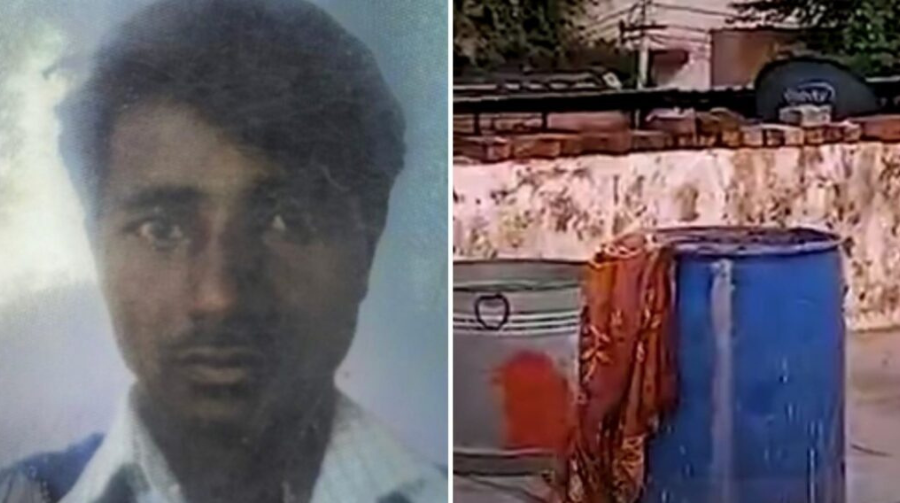
Police Expanding the Probe
Police sources revealed that multiple teams are now tracing Hansraj’s call records and financial transactions to establish possible motives. Investigators are also questioning nearby shopkeepers and workers from the brick kiln where Hansraj was employed. Early suspicion points towards a possible family dispute or foul play involving the missing landlord’s son. Officials, however, have not ruled out other angles, including personal enmity or financial rivalry. Authorities have assured that every lead will be pursued until those missing are traced and the motive behind the killing is uncovered.
-

 Celebrity Lifestyle6 months ago
Celebrity Lifestyle6 months agoEx-Cricketer Shikhar Dhawan Buys Ultra-Luxury Apartment Worth ₹69 Crore in Gurugram
-

 Glamour & Entertainment5 months ago
Glamour & Entertainment5 months agoTelegram Channels Disseminating Pro‑Russian Propaganda in Poland
-
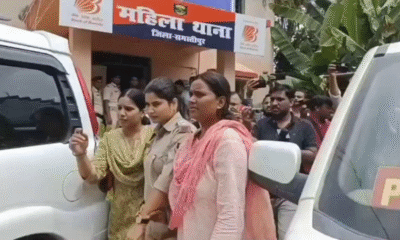
 Crime & Investigation3 months ago
Crime & Investigation3 months agoDelhi Police SI Neetu Bisht Caught Taking ₹20 Lakh Bribe – Shocking Details Emerge in Corruption Probe
-

 Business5 months ago
Business5 months agoAmazon sets 30‑day relocation deadline for corporate staff—opt out by resigning in 60 days
-

 Celebrity Lifestyle5 months ago
Celebrity Lifestyle5 months agoMaha Kumbh Girl Monalisa seen in car allegedly worth ₹1 crore
-

 Entertainment5 months ago
Entertainment5 months agoAbhijeet & Dr Tarika Reunite in CID 2 — Fans Say ‘Clear the Misunderstanding Now
-

 Education5 months ago
Education5 months agoNEET UG Controversy Explained: Paper Leak, Impersonations & Ongoing Probe
-

 Bollywood3 months ago
Bollywood3 months agoNo ₹3 Lakh Fine or 2-Year Jail: The Truth Behind the ‘Hakla’ GIF Buzz




